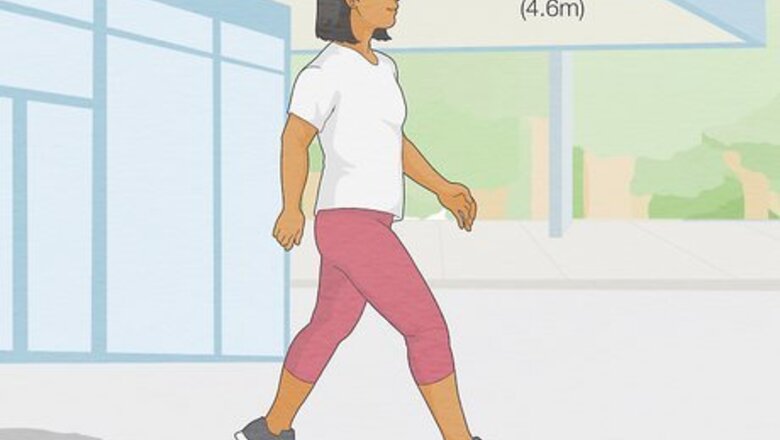
views
- Stand up straight with your head held high, and look forward as you walk.
- Put your heel down first as you take a step, then let your toe come down. Push off with your other foot as you raise your heel and take another step.
- Try not to hyperextend your knee to avoid hurting your ligaments. Keep a slight bend in your knee with every step you take.
- Take quick, short strides rather than slow long ones.
Proper Walking Form
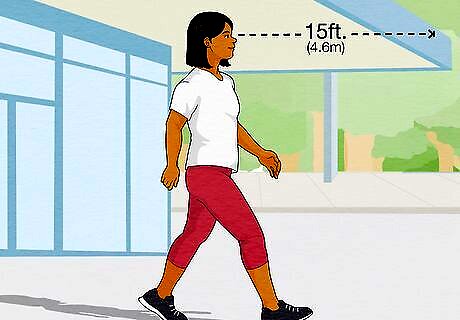
Keep your back straight and your head held high. Good walking posture will help you avoid injury and walk for longer. When you start walking, stand up straight, and look about 15 ft (4.6 m) in front of you. Keep your chin parallel to the ground, and move your shoulders naturally as you swing your arms. Relax your neck, shoulders, and back. Although your posture should be strong, your body should not be held too stiffly as you walk. Walking with good posture improves your blood circulation, and can even help lower your blood pressure.
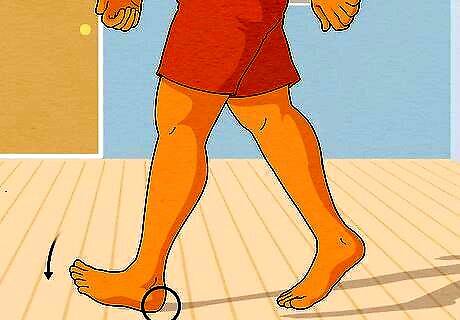
Walk heel to toe. When walking, you should step forward with your foot. Let your heel land on the ground in front of you. Then, roll your foot forward, transferring your weight to the ball of your foot. With your other foot, raise your heel, push your foot off the ground with your big toe, and repeat the first process. Walking is different from running. Your feet should never lift off the ground completely at the same time. Find a stride that's comfortable for you. If you're losing track of the heel-to-toe motion, and aren't rolling your feet consistently, you may need to slow down. EXPERT TIP Monica Morris Monica Morris ACE Certified Personal Trainer Monica Morris is an ACE (American Council on Exercise) Certified Personal Trainer based in the San Francisco Bay Area. With over 15 years of fitness training experience, Monica started her own physical training practice and gained her ACE Certification in 2017. Her workouts emphasize proper warm-ups, cool-downs, and stretching techniques. Monica Morris Monica Morris ACE Certified Personal Trainer Our Expert Agrees: When you're walking, your heel should land on the ground first, then your sole, then the toes. That allows your foot to work like a spring, so it assists your whole body in moving forward.

Avoid hyperextending your knee. Maintain a slight bend in your knee when walking, especially if you're prone to hyperextending your knee when standing. This will feel strange at first, but eventually your knees will adapt. Hyperextending your knee means moving your knee backwards slightly when standing or walking. Some people may have a natural tendency to hyperextend their knees, but hyperextending your knee can cause increased stress to your joints. When walking, be conscious of your knees to avoid hyperextending them. Go slowly up stairs, moving in slow and deliberate motions. Avoid wearing heels too frequently, as this can encourage knee hyperextension.

Keep your hips facing forward. As you walk, make sure your hips aren’t swinging from side to side. Keep them facing in front of you, holding steady as you walk. You may have to shorten your stride as you get used to doing this. Swaying your hips puts unnecessary stress on your hip flexors, which can lead to pain and cramping.
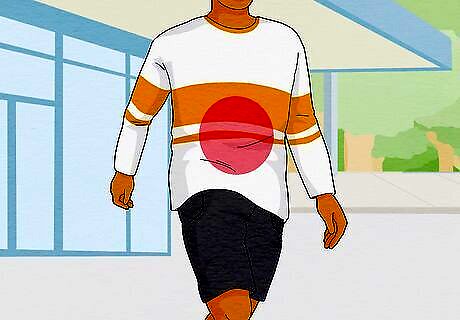
Engage your core as you walk. Make a conscious effort to engage your abs and the muscles in your torso. This will help keep your posture upright and your head held high. Swing your arms with a slight bend in the elbows if you want. Tighten your stomach muscles, and don’t arch your back forward or backward.
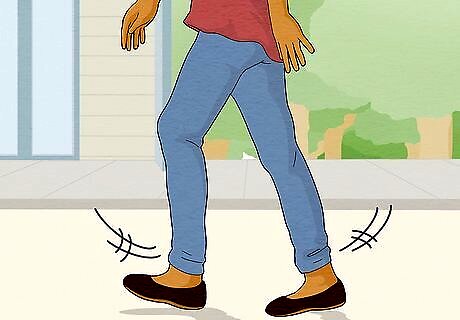
Take quick, not long, strides. When most people think of walking quickly, they often imagine themselves stepping in long strides. However, taking too long of a stride can hurt your lower back over time. Instead, take small, quick steps to pick up the pace. Since we all have legs of different lengths, our strides are going to be somewhat different. Use the stride that’s best for you.
Walking for Exercise
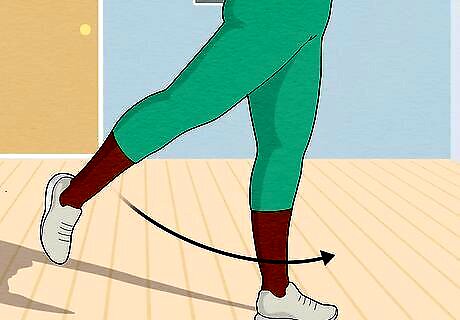
Warm up your body for 5 to 10 minutes before walking. Warming up your body by starting slowly when you walk will reduce over-exertion on your muscles. Make circles with each ankle, swing each leg, make slow circles with your hips or legs, make arm circles, march in place, and swing your legs back and forth to loosen up your muscles. If this is your first time walking for exercise, take a few extra minutes to warm up first. That way, you’ll avoid over-exerting yourself, which could lead to injury.
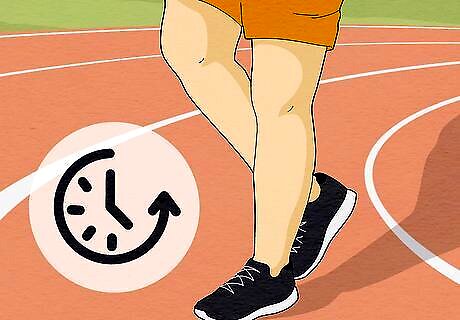
Start with slow, short walks. As with any exercise regimen, you might be more likely to quit walking if you try to do too much too soon. You also could strain your muscles. Be patient and work up to longer walks. Even though walking is a low-impact exercise, your muscles, joints and feet must adjust to new activity levels to avoid soreness and injury. Motivate yourself by remembering that you can burn about 400 calories from a brisk walk, although it takes about 5 miles to do so. If you want to lose weight, it’s a good idea to also reduce how many calories you eat per day and to eat healthier unprocessed foods. Try to add 2,000 steps into your daily routine when you first start walking. Sometimes you can add steps just by making small lifestyle choices every single day, such as taking the stairs at work when you could take the elevator. If you don’t see weight loss right away, it might be because you are starting to build up muscle, which is good. Be patient, and you will see results over the course of time. Slowly add more steps each week.
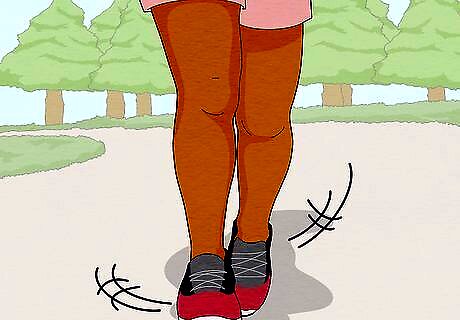
Walk at a brisk pace. To get the greatest health benefits from walking, try to walk at a slightly faster pace than a mere stroll. Strive to walk with quick, not long, steps. Walking should be a moderate-intensity aerobic activity. This means that you’ve broken a sweat and your heart rate has risen. How can you tell if you’re walking fast enough? You should be able to talk but not sing a song while you’re walking. Three miles per hour is a good pace if you’re walking to improve your health. If you’re walking to lose weight, pick up the pace to 4 miles in an hour, which is a 15-minute mile.
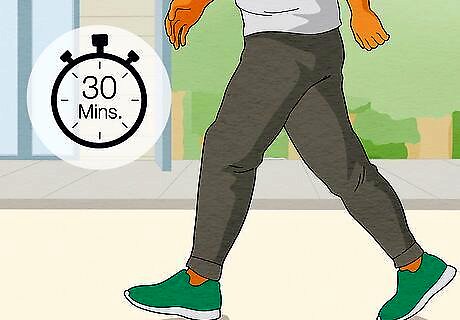
Aim to walk 30 minutes per day, 4 days a week. This moderate walking routine will not only help you lose weight, but will improve circulation, build muscle, and keep your heart healthy. Make a schedule that works for you, and try to stick to a routine to be consistent. One benefit of walking is that you don’t need a lot of specialized equipment to do it. You can walk wherever you are, even if you are on vacation. You don’t need to be in great shape to start doing it. Walking daily (or almost daily) helps prevent heart disease, control the risk of diabetes, and can even lower your blood pressure.
Walking Equipment

Track your steps with a pedometer. While it’s not strictly necessary, many people find using a pedometer helpful when tracking their steps. You can either buy an external one to wear on your person, or you can use your smartphone to count your steps and track your goals. Shoot for walking 10,000 steps a day. Record your steps every day and figure out your daily and weekly average. The goal is for the average to go up gradually as your endurance increases and you walk more.
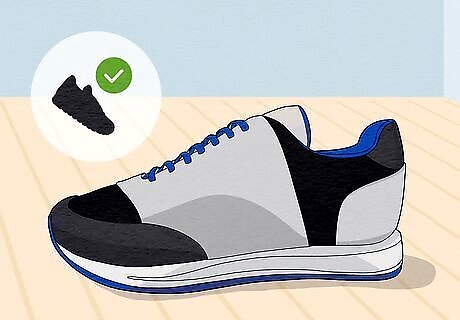
Buy decent shoes for walking. Walking is a very inexpensive form of exercise, but you do need to choose comfortable shoes. Find running shoes or tennis shoes that give you adequate support and don’t cause blisters when you wear them for long periods of time. Shoes suitable for walking should bend through the ball of the feet pretty easily while still being fairly durable. Choose a shoe with a low heel. High tops are not a great choice for walking unless they are specifically designed for walking or hiking, which a few of them are.
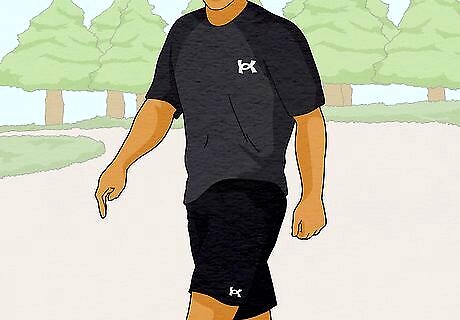
Wear loose-fitting workout clothing. Choosing the right workout gear will help you stay cool and comfortable as you walk. Look for moisture-wicking fabrics, like polyester blends or wool, to wick sweat away as you exercise. Beware of the sun, depending on the season and climate. If it’s sunny, be sure to wear sunscreen and cover up with a hat. Wear a jacket if it’s cold or might rain. Make sure that you look at the weather forecast before walking so you’re dressed appropriately for the temperature.


















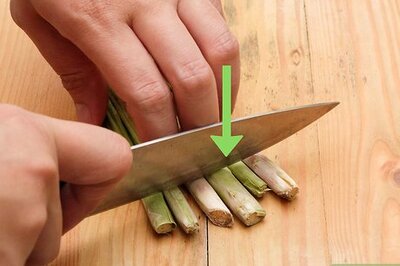
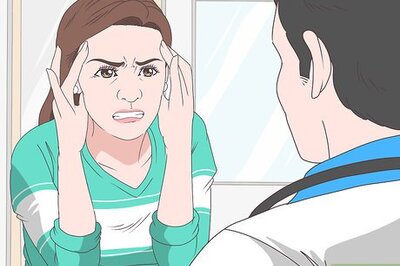
Comments
0 comment